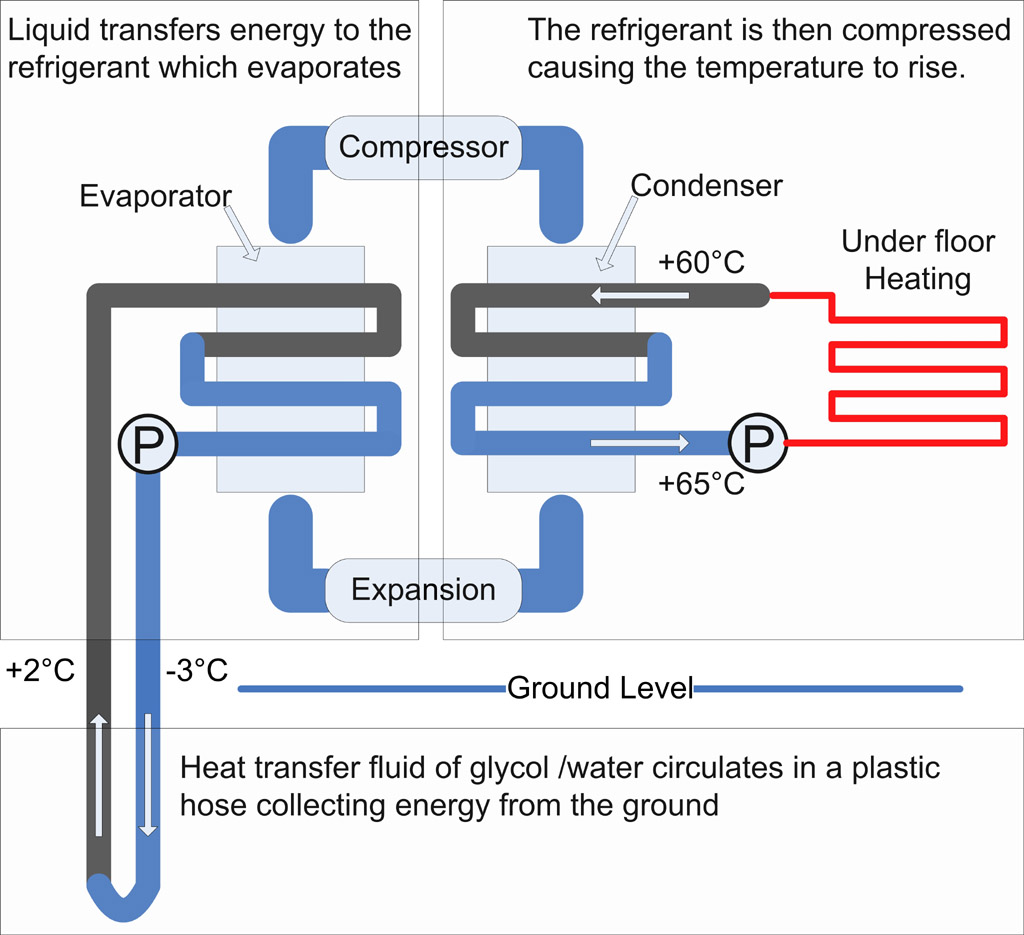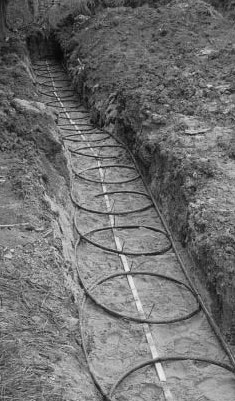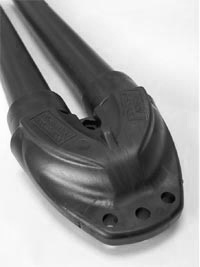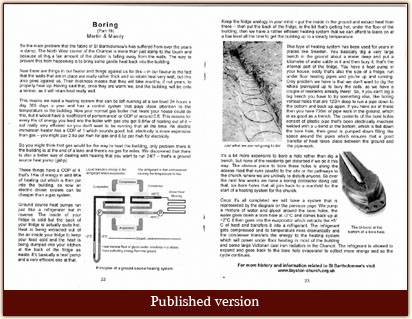Martin & Mandy

So the main problem that the fabric of St Bartholomew's has suffered from over the years is damp. The North West corner of the Chancel is more than just damp to the touch and because of this a fair amount of the plaster is falling away from the walls. The way to prevent this from happening is to bring some gentle heat back into the building.
Now there are things in our favour and things against us for this - in our favour is the fact that the walls that are in place are really rather thick and so retain heat very well, but this also goes against us. Their thickness means that they will take months, if not years, to properly heat up. Having said that, once they are warm we, and the building, will be onto a winner, as it will retain heat really well.
 This means we need a heating system that can be left running at a low level 24 hours a day 365 days a year and has a control system that pays close attention to the temperature in the building. Now your normal gas boiler that heats your house could do this, but it would have a 'coefficient of performance' or COP of around 0.8 This means for every Kw of energy you feed into the boiler with gas you get 0.8Kw of heating out of it - not really very efficient so you don't want to be running that all the time. An electric immersion heater has a COP of 1 which sounds good, but, electricity is more expensive than gas - you might pay 2.5p per kwh for gas and 8.5p per Kwh for electricity.
This means we need a heating system that can be left running at a low level 24 hours a day 365 days a year and has a control system that pays close attention to the temperature in the building. Now your normal gas boiler that heats your house could do this, but it would have a 'coefficient of performance' or COP of around 0.8 This means for every Kw of energy you feed into the boiler with gas you get 0.8Kw of heating out of it - not really very efficient so you don't want to be running that all the time. An electric immersion heater has a COP of 1 which sounds good, but, electricity is more expensive than gas - you might pay 2.5p per kwh for gas and 8.5p per Kwh for electricity. 
So you might think that gas would be the way to heat the building - only problem there is the building is at the end of a lane and there's no gas for miles. We discovered that there is also a better way of dealing with heating that you want to run 24/7 - that's a ground source heat pump (gshp).
These things have a COP of 4 - that's 1Kw of energy in and 4Kw of heating out which is then put into the building - so now an electric driven system can be cheaper than a gas system.
Ground source heat pumps run just like a refrigerator but in reverse. The inside of your fridge is cold but the back of your fridge is actually quite hot. Heat is being extracted out of the air inside your fridge to keep your food cold and the heat is being dumped into your kitchen at the back of the fridge as waste. It's basically a heat pump and a very efficient one at that.
Keep the fridge analogy in your mind - put the inside in the ground and extract heat from there - then put the back of the fridge, ie the bit that's getting hot, under the floor of the building - then we have a rather efficient heating system that we can afford to leave on at a low level all the time to get the building up to a steady temperature.
 This type of heating system has been used for years in places like Sweden. You basically dig a very large trench in the ground about a meter deep and put a kilometer of water cable in it and then bury it, that's the internal part of the fridge. You have a heat pump in your house, oddly that's also the size of a fridge, run under floor heating pipes and you're up and running. Only problem we have is that we don't want to dig the whole graveyard up to bury the coils, as we have a couple of residents already there! So, if you can't dig a big trench you have to try something else, like boring vertical holes that are 120m deep to run a pipe down to the bottom and back up again. If you have six of these then you have 720m of pipe work in the ground, which is as good as a trench. The contents of the bore holes consist of plastic pipe that's been electrically machine welded with a u-bend at the bottom, which is fed down the bore hole, then grout is pumped down filling the space around the pipes which ensures that a good transfer of heat takes place between the ground and the pipework.
This type of heating system has been used for years in places like Sweden. You basically dig a very large trench in the ground about a meter deep and put a kilometer of water cable in it and then bury it, that's the internal part of the fridge. You have a heat pump in your house, oddly that's also the size of a fridge, run under floor heating pipes and you're up and running. Only problem we have is that we don't want to dig the whole graveyard up to bury the coils, as we have a couple of residents already there! So, if you can't dig a big trench you have to try something else, like boring vertical holes that are 120m deep to run a pipe down to the bottom and back up again. If you have six of these then you have 720m of pipe work in the ground, which is as good as a trench. The contents of the bore holes consist of plastic pipe that's been electrically machine welded with a u-bend at the bottom, which is fed down the bore hole, then grout is pumped down filling the space around the pipes which ensures that a good transfer of heat takes place between the ground and the pipework.
It's a bit more expensive to bore a hole rather than dig a trench, but none of the residents get disturbed if we do it this  way. The obvious place to bore these holes is along the access road that runs parallel to the site, or the pathways to the church, where we are unlikely to disturb anyone. So over the next few weeks we have a boring contractor doing just that, six bore holes that all join back to a manifold for the start of a heating system for the church.
way. The obvious place to bore these holes is along the access road that runs parallel to the site, or the pathways to the church, where we are unlikely to disturb anyone. So over the next few weeks we have a boring contractor doing just that, six bore holes that all join back to a manifold for the start of a heating system for the church.
Once it's all completed we will have a system that is represented by the diagram on the previous page. We pump a mixture of water and glycol around the bore holes, the water goes down a bore hole at -3°C and comes back up at +2°C itthen goes into the evaporator which extracts the +5°C of heat and transfers it into a refrigerant. The refrigerant gets compressed and it's temperature rises dramatically and the condenser transfers the energy to the heating system which will power under floor heating in most of the building and some large Victorian cast iron radiators in the Chancel. The refrigerant is allowed to expand and goes back to the bore hole evaporator to collect more energy and so the cycle continues.
 |
|
 |
